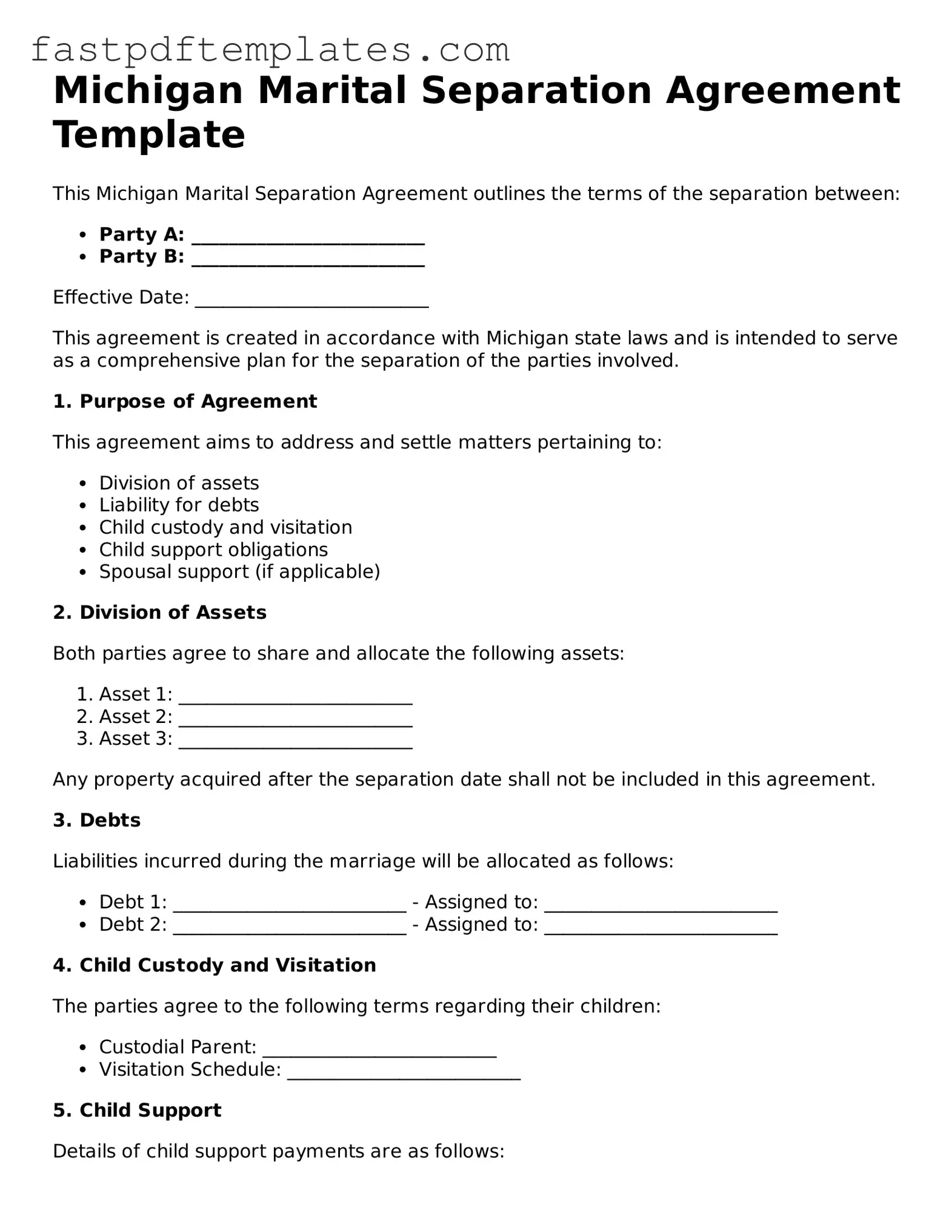Michigan Marital Separation Agreement Template
This Michigan Marital Separation Agreement outlines the terms of the separation between:
- Party A: _________________________
- Party B: _________________________
Effective Date: _________________________
This agreement is created in accordance with Michigan state laws and is intended to serve as a comprehensive plan for the separation of the parties involved.
1. Purpose of Agreement
This agreement aims to address and settle matters pertaining to:
- Division of assets
- Liability for debts
- Child custody and visitation
- Child support obligations
- Spousal support (if applicable)
2. Division of Assets
Both parties agree to share and allocate the following assets:
- Asset 1: _________________________
- Asset 2: _________________________
- Asset 3: _________________________
Any property acquired after the separation date shall not be included in this agreement.
3. Debts
Liabilities incurred during the marriage will be allocated as follows:
- Debt 1: _________________________ - Assigned to: _________________________
- Debt 2: _________________________ - Assigned to: _________________________
4. Child Custody and Visitation
The parties agree to the following terms regarding their children:
- Custodial Parent: _________________________
- Visitation Schedule: _________________________
5. Child Support
Details of child support payments are as follows:
Amount: _________________________
Frequency: _________________________
6. Spousal Support
Should spousal support be applicable, the following terms are set:
Amount: _________________________
Duration: _________________________
7. Modifications
This agreement can be modified only through written consent signed by both parties.
8. Governing Law
This agreement is governed by the laws of the State of Michigan.
9. Signatures
By signing below, both parties acknowledge that they understand and agree to the terms outlined in this Separation Agreement.
Party A: _________________________ Date: _________________________
Party B: _________________________ Date: _________________________
Witness: _________________________ Date: _________________________
This template serves as a foundational document for separation in Michigan. It is important to review it with a legal professional for suitability and compliance with current laws.
